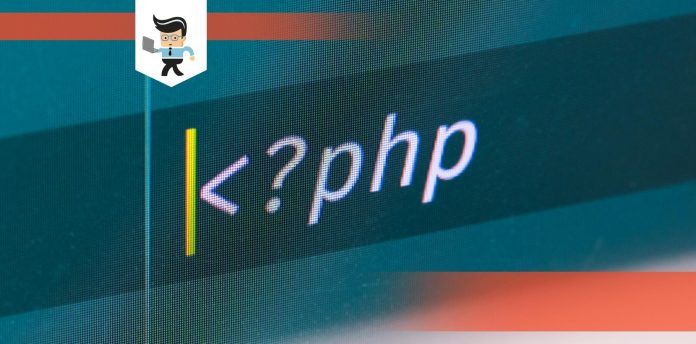A PHP switch is a statement that executes a certain code based on the implementation of relevant cases that match the expression value.

This article will dive deep into its mechanism and comprehensively cover its important components.
There will also be some engaging examples of the usage of switch statements in simple and advanced tasks. You can learn everything about switches from this article so do not miss this wonderful opportunity.
Contents
How To Switch in PHP: Learn the Basics
The mechanism of switches in PHP involves a single expression “n” which is usually a variable and has to be evaluated once. The value of that expression undergoes a comparison step of that mechanism in which it is compared to the value of every case that is present in that structure.
If the comparison step finds a match, the code associated with the matched PHP switch case is implemented. You will also have to include a break along with your cases so that the code does not automatically implement the next case as part of the switch.
There has to be a default statement provided as well apart from the main cases so that it can be used in the case of no match. In this way, switches take input in the form of a single variable to check it against all the cases of those switch statements. It means that a switch corresponds to a single check to match a variable with its intended case instead of checking multiple times.
– Syntax of a Switch Statement
The following is the syntax for a general switch statement in PHP. It highlights that the expression of a switch is the first component of its mechanism. The outcome of its evaluation is compared with the cases associated with it.
The cases are systematically written below the expression in sequence and they will be compared with the outcome based on that sequence. These cases are followed by a default PHP case which will be executed if there is no match. An important component of the PHP switch syntax of a switch is a break statement which has to be placed in all the cases, as you’ll realize from this syntax below:
| switch (expression) { case value1: // code to be executed if the expression matches with value1 break; case value2: // code to be executed if the expression matches with value2 break; case value3: // code to be executed if the expression matches with value3 break; … default: // code to be executed if there is no match } |
A Switch Statement and an If-else If-else Statement
The above mechanism of a PHP switch statement holds a certain level of resemblance with that of an if-else if-else statement. The main concepts of these two statements are the same to some extent with regards to their feature of comparing a variable with various values of conditions.
In addition, it is considered common practice to prefer the if-else if-else statement over the switch statement in the case of two or three conditions. However, the common practice involves the switch statement if there are numerous values and their conditions to be considered.
This is because the use of an if-else if-else statement will result in a lengthy code in PHP which might turn out to be difficult for you to manage. Whereas a switch statement will produce a compact and understandable code that will save your time.
– Example Using an If-Else If-Else Statement Sequence
The following are examples of the same implementation and will help you develop an understanding of the if-else if-else statement and switch statement respectively:
| <?php if ($favorite_color == ‘Blue’) { echo “Your favorite color is Blue!”; } elseif ($favorite_ color == ‘Red’) { echo “Your favorite color is Red!”; } elseif ($favorite_ color == ‘Green’) { echo “Your favorite color is Green!”; } ?> |
– Example Using the PHP Switch String
The simple and understandable example of the PHP switch string below shows how it is better than an if-else if-else statement especially with multiple conditions in PHP:
| <?php switch ($favorite_color) { case ‘Blue’: echo “Your favorite color is Blue!”; break; case ‘Red’: echo “Your favorite color is Red!”; break; case ‘Green’: echo “Your favorite color is Green!”; break; } ?> |
Importance of a Break Statement
A break statement is an important component of the mechanism of a switch statement in PHP as it can either procure the intended output or a totally different one. This is why it is vital that the involvement of break statements is ensured in every implementation.
Let’s take an example to understand the importance of a break statement:
| <?php $favorite_sport = ‘Cricket’; switch ($favorite_sport) { case ‘Football’: echo “Your favorite sport is Football!”; break; case ‘Cricket’: echo “Your favorite sport is Cricket!”; case ‘Hockey’: echo “Your favorite sport is Hockey!”; break; } ?> |
This example will not output “Your favorite sport is Cricket!” and instead the output will be “Your favorite sport is Cricket! Your favorite sport is Hockey!” This is due to the absence of the break statement in the “Cricket” case.
As a result, the code of the PHP case which is next in the sequence will also be executed. Keep in mind that the execution will not be dependent on the value of the $favorite_sport variable.
Role of the Default Case
A PHP switch default case is placed at the end of an implementation and its usage is optional for any execution. A default case provides a default code so that it can be executed. Its execution corresponds to the scenario in which there is no match between the expression value and any of the main cases.
Advanced Examples
– PHP Switch: Multiple Cases for the Same Output
Some tasks can include the execution of the same code that corresponds to different cases. In such scenarios, a switch will implement all of those cases as the value of its variable and the same code will be executed for them.
Here is an example of how one output can be printed for multiple cases that exist in a switch statement:
| <?php switch ($favorite_sports) { case ‘Cricket’: case ‘Baseball’: case ‘Football’: echo “All of your favorite sports are played outdoors.”; break; default: echo “You can try out some indoor sports as well like Badminton, Snooker and Squash.”; } ?> |
– PHP Switch: Using Expressions in Switch Statements
The prior discussions have incorporated a variable in the implementation of a switch statement in PHP. Now we will be taking a look at the usage of an expression in the execution of codes for switch statements. An expression is evaluated in a switch statement to obtain an outcome that can match with one of the cases involved.
Let’s look at an example in which an expression is used in a switch statement to obtain the current day of the week as output:
| <?php switch (date(“N”, time())) { case 0: echo ‘Sunday’; break; case 1: echo ‘Monday’; break; case 2: echo ‘Tuesday’; break; case 3: echo ‘Wednesday’; break; case 4: echo ‘Thursday’; break; case 5: echo ‘Friday’; break; case 6: echo ‘Saturday’; break; } ?> |
– PHP Switch: Nested Switch Statements
It is important to note that switch statements can also be nested to execute implementations based on relevant tasks in PHP. It means that a switch statement can be used within another switch statement. Keep in mind that those executions that involve nested switch statements tend to make their codes harder and difficult to understand and manage.
The following is an example of the usage of nested switch statements to obtain intended outputs for relevant tasks:
| <?php switch( $sports ) { case “Cricket”: switch( $result ) { case “Win”: echo “Your team has won!”; break; case “Loss”: echo “Your team has lost!”; break; } break; case “Football”: switch( $result ) { case “Win”: echo “Your team has won!”; break; case “Loss”: echo “Your team has lost!”; break; } break; case “Hockey”: switch( $result ) { case “Win”: echo “Your team has won!”; break; case “Loss”: echo “Your team has lost!”; break; } break; } ?> |
Conclusion
In this article, we assessed the core concepts of switches and their statements in PHP. The following is the final run-through of the important points that were covered:
- We highlighted the mechanism of switch statements and how they work as an effective method to implement various cases.
- We also compared switch statements with if-else if-else statements and discussed the similarities and differences in their mechanism, complexity and code management.
- There was a mention of break statements as well and why they are important in the syntax of switch statements.
- We further looked at the role of default cases and what they do when there is no match between the main cases and expression value.
- Then we moved on to advanced uses of the switch statement where we looked at how multiple cases can be executed to implement the same code.
- We saw how expressions can be used to implement switch statements and complete complex tasks.
- Finally, we deduced that nested switches can also be used in cases that involve the execution of switch statements within other switch statements.
You can constructively acknowledge the mechanism of switch statements with this article. Hold onto our guide and you will never encounter any problem while working with switches in PHP.







